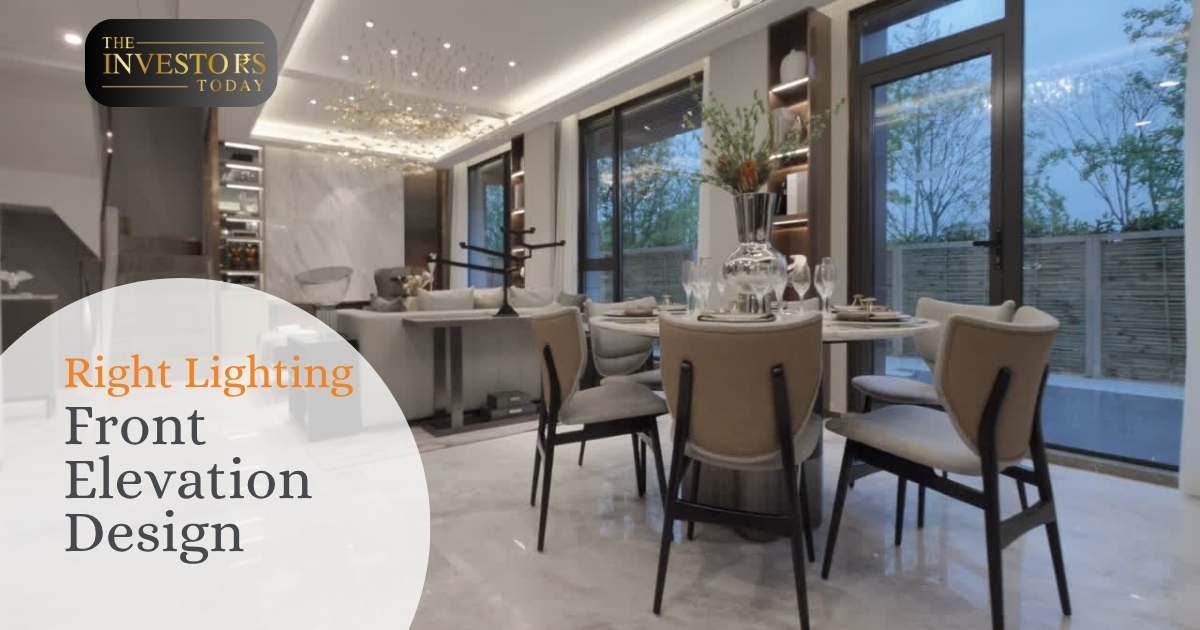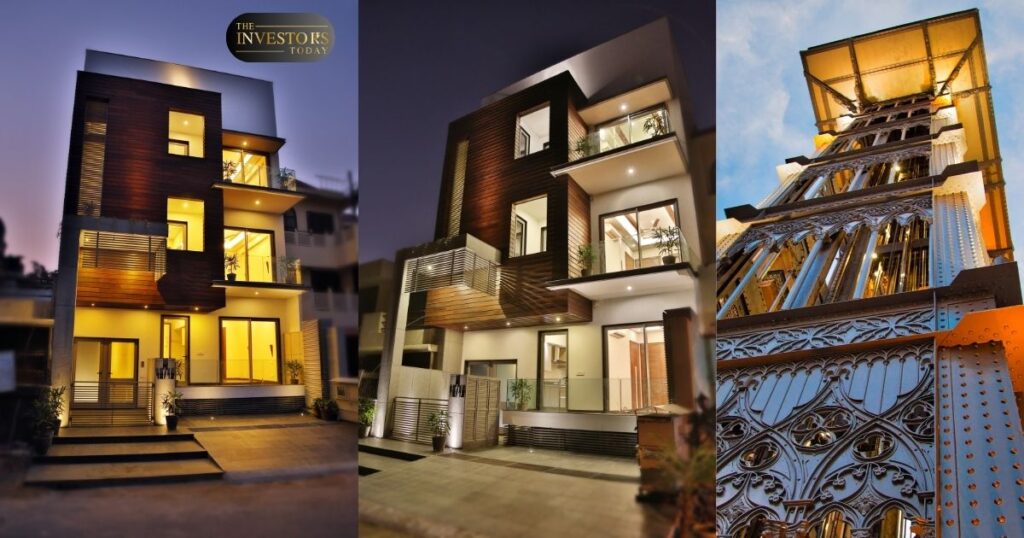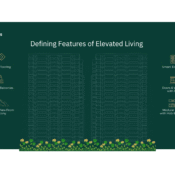
How to Choose the Right Lighting for Front Elevation Design
Your home’s front elevation is the first impression visitors and passersby have of your property. The right lighting enhances architectural features, improves security, and creates a welcoming ambiance. But with so many options available, how to choose the right lighting for front elevation design can be challenging.
This guide covers essential factors to consider, including types of lighting fixtures, placement strategies, and energy-efficient solutions.
Why Front Elevation Lighting Matters
The front elevation of your home is its face to the world—the first thing visitors, neighbors, and even potential buyers notice. Lighting plays a crucial role in defining this space, going beyond mere functionality to enhance aesthetics, security, and overall appeal. Below, we break down the three key reasons why front elevation lighting is essential.
1. Enhances Curb Appeal – Highlights Architectural Details
What is Curb Appeal?
Curb appeal refers to how attractive your home looks from the street. A well-lit exterior makes your property stand out, increasing its perceived value and creating a positive first impression.
How Lighting Enhances Curb Appeal:
- Accentuates Architectural Features – Strategically placed lights can highlight columns, arches, stonework, and other design elements, making them more visually striking at night.
- Creates Visual Depth – Layered lighting (ambient, accent, and task lighting) adds dimension, preventing a flat or dull appearance.
- Improves Nighttime Aesthetics – A well-lit home looks more inviting and luxurious compared to a dark or poorly lit exterior.
Examples of Lighting for Curb Appeal:
- Wall Sconces – Frame the entryway elegantly.
- Uplighting – Emphasizes tall structures like pillars or textured walls.
- Pathway Lights – Guides visitors while adding a decorative touch.
2. Improves Safety & Security – Deters Intruders and Prevents Accidents
Why Safety & Security Matter in Exterior Lighting:
A poorly lit home can be a target for burglaries and pose hazards like tripping or slipping. Proper lighting minimizes these risks.
How Lighting Enhances Safety & Security:
- Deters Burglars – Well-lit exteriors discourage intruders, as shadows and hiding spots are eliminated.
- Prevents Accidents – Illuminated pathways, stairs, and driveways reduce the risk of trips and falls.
- Increases Visibility – Helps residents and guests navigate safely at night.
Best Lighting Solutions for Safety & Security:
- Motion-Sensor Lights – Activate when movement is detected, startling intruders and alerting homeowners.
- Floodlights – Provide broad, bright coverage for driveways and backyards.
- Step Lights – Installed on staircases to prevent missteps.
3. Creates Ambiance – Sets the Mood for Your Home’s Exterior
The Role of Ambiance in Exterior Lighting:
Lighting isn’t just about visibility—it sets the tone for your home’s exterior, making it feel warm, modern, or dramatic based on your preference.
How Lighting Creates Ambiance:
- Warm vs. Cool Lighting – Warm white (2700K-3000K) creates a cozy, welcoming feel, while cool white (4000K-5000K) offers a sleek, modern look.
- Decorative Fixtures – Lanterns, string lights, and pendant lamps add personality.
- Dynamic Lighting – Smart LED systems allow color-changing options for holidays or special occasions.
Lighting Techniques for Ambiance:
- Moonlighting – Soft, downward light from trees mimics natural moonlight.
- Silhouetting – Backlighting to create dramatic shadows of plants or sculptures.
- Grazing – Light skims textured walls to enhance patterns.

Key Factors to Consider When Choosing Front Elevation Lighting
1. Understand the Different Types of Lighting
To create a well-lit front elevation, use a combination of these lighting types:
- Ambient Lighting – Provides overall illumination (e.g., wall-mounted lanterns, porch lights).
- Accent Lighting – Highlights architectural features (e.g., spotlights, uplights).
- Task Lighting – Focuses on functional areas (e.g., pathway lights, step lights).
- Decorative Lighting – Adds style (e.g., string lights, pendant lights).
2. Choose the Right Fixtures
Select fixtures that complement your home’s architectural style:
- Modern Homes – Sleek, minimalistic LED fixtures.
- Traditional Homes – Classic lanterns or vintage-style sconces.
- Rustic Homes – Wrought iron or bronze fixtures.
Popular front elevation lighting fixtures include:
- Wall Sconces – Ideal for entryways.
- Floodlights – For wide coverage (great for security).
- Path Lights – Illuminate walkways.
- Uplights & Downlights – Highlight textures and columns.
3. Consider Light Placement & Direction
Proper placement ensures balanced lighting:
- Entryway – Use symmetrical fixtures on either side of the door.
- Pathways & Driveways – Install low-level path lights for safety.
- Architectural Features – Use uplighting for columns and textured walls.
- Landscaping – Incorporate subtle lighting for trees and shrubs.
Avoid overlighting—too many bright lights can create glare and reduce aesthetic appeal.
4. Select the Right Light Color & Temperature
- Warm White (2700K-3000K) – Cozy and inviting (best for residential homes).
- Cool White (4000K-5000K) – Modern and crisp (suits contemporary designs).
- Colored Lighting – Used for festive or themed exteriors (e.g., RGB LEDs).
5. Opt for Energy-Efficient Lighting
LED lights are the best choice for front elevation lighting because they:
- Consume less energy.
- Last longer than traditional bulbs.
- Offer dimming and smart control options.
Solar-powered lights are also a great eco-friendly option for pathways and garden areas.
6. Incorporate Smart Lighting Controls
Smart lighting systems allow you to:
- Adjust brightness remotely.
- Set timers and motion sensors.
- Integrate with home automation (e.g., Alexa, Google Home).
Motion-sensor lights enhance security by illuminating when movement is detected.
Common Mistakes to Avoid
- Overlighting – Too many bright lights can look harsh.
- Poor Placement – Lights should enhance, not distract.
- Ignoring Maintenance – Dust and weather can reduce light efficiency.
- Mismatched Styles – Fixtures should align with your home’s design.
Choosing the right lighting for your front elevation design requires a mix of aesthetics, functionality, and technology. By selecting the right fixtures, positioning them strategically, and using energy-efficient options, you can create a stunning and secure exterior.
Whether you’re looking to boost curb appeal or improve safety, the right lighting makes all the difference. Start planning your front elevation lighting today to transform your home’s exterior!



